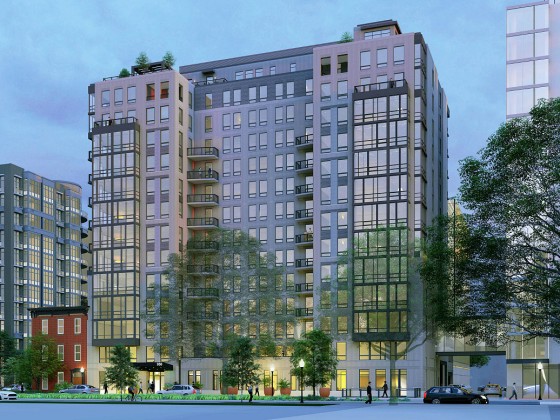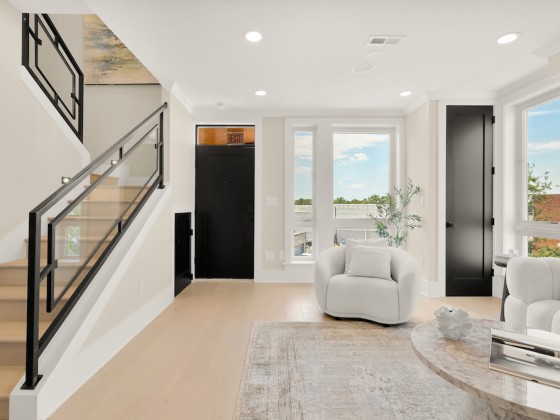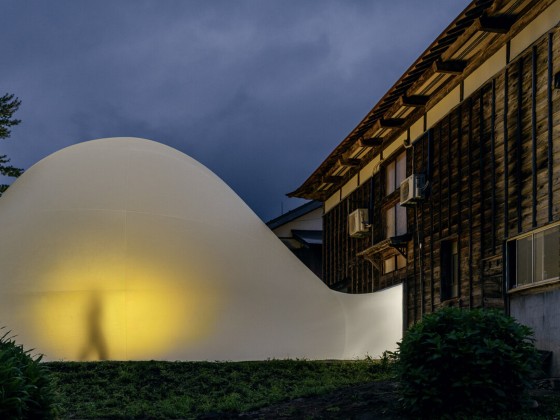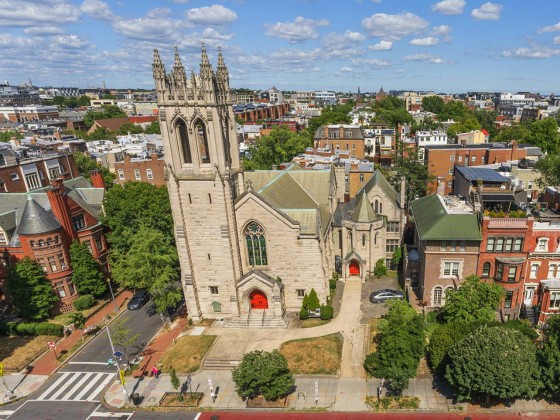What's Hot: Douglas Development Files PUD For Large Warehouse At New City Site Along New York Avenue
 Zoning Commission to Consider Expanding Inclusionary Zoning in DC Next Month
Zoning Commission to Consider Expanding Inclusionary Zoning in DC Next Month
✉️ Want to forward this article? Click here.
This article is part of our 2020 contribution to the DC Homeless Crisis Reporting Project in collaboration with other local newsrooms. The collective works will be published throughout the day at DCHomelessCrisis.press.
You can also join the public Facebook group or follow #DCHomelessCrisis on Twitter to discuss further.

At the beginning of the year, DC's Office of Planning (OP) filed a zoning application seeking to increase inclusionary zoning (IZ) requirements in an effort to achieve more affordable housing production citywide.
Now, as the Zoning Commission gears up for another hearing on the topic, UrbanTurf is revisiting the proposed amendments to IZ and how they have evolved.
Approval of expanded inclusionary zoning would amend the zoning code to require that mixed-use and residential projects that used a map amendment to add density or change the site's use from non-residential to residential provide 10 to 20% of the residential gross floor area (GFA) as inclusionary zoning. Planned-unit developments (PUDs) would be exempt, and any affordable housing above the minimum required for PUDs would continue to count as a public benefit.
OP is now also proposing that the expanded IZ set-aside could be reduced by 20% in instances where half of the affordable units are family-sized or where all of the affordable units are for households earning up to 50% median family of income (MFI). The application also proposes that the maximum IZ set-aside of 20% be required for projects which rezone a site from PDR ("production, distribution, and repair" zoning typically associated with industrial areas). For all other zones, the required IZ would be on a sliding scale based upon the incremental increase in density requested.
Currently, IZ is mandatory for 8 to 10% of the residential gross floor area (GFA) in projects with ten or more residential units, with some zones excepted; developments that take advantage of bonus density can have a required IZ set-aside of up to 12.5% of GFA. IZ units in projects approved after 2017 must be affordable for households earning up to 60% median family income (MFI) for rentals and up to 80% MFI for for-sale units.
The Office of Planning held a public roundtable in July where suggestions ranged from expanded IZ also applying to PUDs to lots east of the Anacostia River being exempt from expanded IZ to mitigate the concentration of affordable housing in that section of the city.
Somerset Development Company testified that, in addition to expanded IZ, there should also be a zoning amendment to permit projects that meet a minimum affordability threshold to proceed by-right with additional density baked in, citing the often-cumbersome approval process for zoning relief. MidCity Development recommended that OP explore tailoring expanded IZ to each submarket separately.
Based on feedback, OP expects to file additional zoning amendment applications to require standard IZ in buildings converted from commercial to residential, and require standard IZ in zones that currently allow residential development but do not require IZ.
The Zoning Commission is scheduled to hold a public hearing on the proposed expansion next month, right after the DC Council holds a public hearing on the proposed amendments to the Comprehensive Plan.
See other articles related to: affordable housing, affordable housing dc, affordable housing production, dc office of planning, expanded iz, inclusionary zoning, map amendment, office of planning, zoning commission
This article originally published at https://dc.urbanturf.com/articles/blog/zoning-commission-to-consider-expanding-inclusionary-zoning-in-dc-next-mont/17406.
Most Popular... This Week • Last 30 Days • Ever

When you buy a home in the District, you will have to pay property taxes along with y... read »

The largest condominium building in downtown DC in recent memory is currently under c... read »

The plan to convert a Dupont Circle office building into a residential development ap... read »

The Rivière includes just 20 homes located on the eastern banks of the Anacostia Riv... read »

Why Tyra Banks is serving ice cream in DC; a bike shop/record store opens in Adams Mo... read »
DC Real Estate Guides
Short guides to navigating the DC-area real estate market
We've collected all our helpful guides for buying, selling and renting in and around Washington, DC in one place. Start browsing below!
First-Timer Primers
Intro guides for first-time home buyers
Unique Spaces
Awesome and unusual real estate from across the DC Metro













